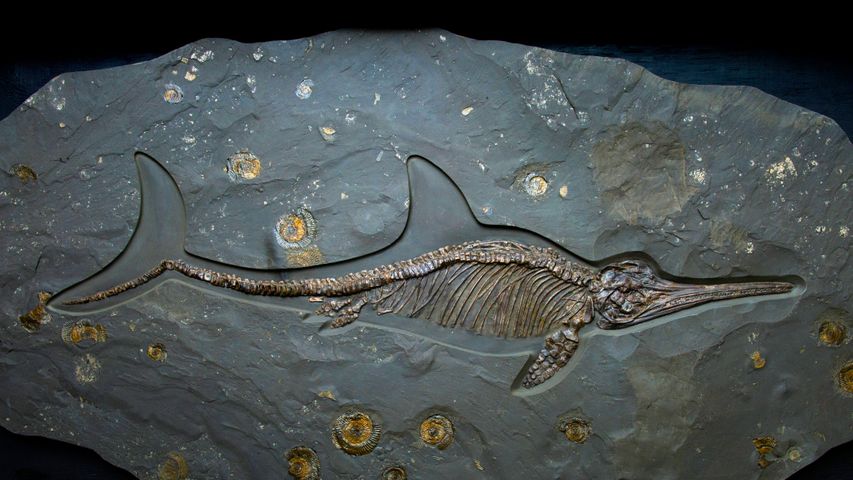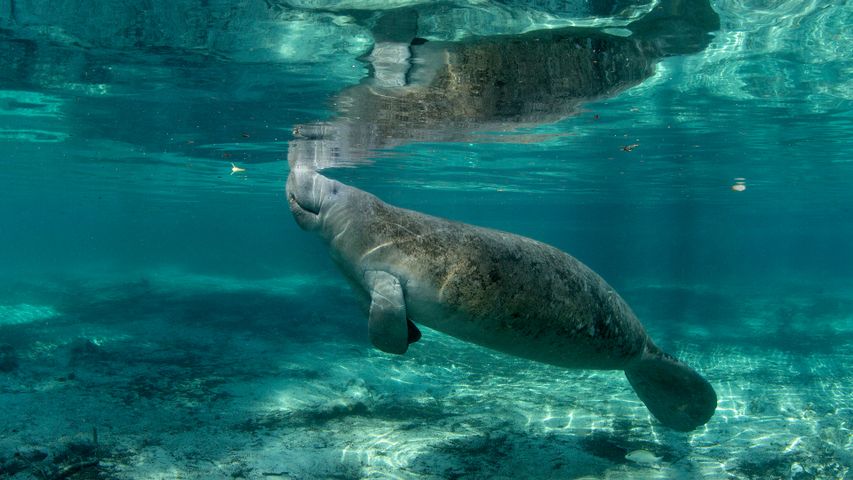An ichthyosaur fossil of the Jurassic period, Dinosaurland Fossil Museum, Lyme Regis, Dorset, England
© Christopher Jones/Alam
Celebrating a young girl's age-old discovery
When 12-year-old Mary Anning uncovered the complete skeleton of a fish-like creature near her home on England's southern coast in 1811, extinction was a shaky idea in science. Fossils were nothing new – everything dies and leaves remains, after all. But could an entire species really die off? Were more of these 17-foot sea monsters lurking in the depths of the English Channel?
The fact that ichthyosaurs like this went extinct 90 million years ago seems obvious today (which, by the way, is National Fossil Day). But though such definite answers were still only suspicions during Mary Anning's lifetime, she persisted with paleontology. Her prolific fossil finds fueled both public interest and scientific understanding, and she even discovered two more species in her 20s – the pterodactyl and the plesiosaur. Though she died young at 47, largely denied recognition as a woman in Victorian society, her influence endures like the fossils that fascinated her.
Related Images
Bing Today Images





 Sea turtle, Fernando de Noronha, Brazil
Sea turtle, Fernando de Noronha, Brazil
 Steller sea lions, Vancouver Island, British Columbia, Canada
Steller sea lions, Vancouver Island, British Columbia, Canada
 Atlantic spotted dolphins near Santa Maria Island, Azores, Portugal
Atlantic spotted dolphins near Santa Maria Island, Azores, Portugal
 Manatee in Crystal River, Florida, United States
Manatee in Crystal River, Florida, United States
 Group of giant cuttlefish in Spencer Gulf, off Whyalla, South Australia
Group of giant cuttlefish in Spencer Gulf, off Whyalla, South Australia
 Humpback whale mother and calf, Tonga
Humpback whale mother and calf, Tonga
 Crescent-tail bigeye fish in the Great Barrier Reef, Australia
Crescent-tail bigeye fish in the Great Barrier Reef, Australia
 California sea lion in a forest of giant kelp, Baja California, Mexico
California sea lion in a forest of giant kelp, Baja California, Mexico
